Houseplants are lovely decor elements. While beautifying your home and making it look peaceful, they also have other functions, such as air purification.
If you are interested in houseplants, consider growing exceptionally beautiful and unique ones that will always cause a stare.
Read this article to see some of the most unique houseplants you can grow.
Table of Contents
1. Snake Plant (Dracaena trifasciata)

- Height: 1-3 feet.
- USDA hardiness zone: 9-11.
- Bloom season: Spring.
One common yet unique plant you can grow indoors is the snake plant. This plant is not just beautiful; it is beneficial as it helps to oxygenate your room.
Snake plants enrich your room with oxygen, especially at night when other plants stop the process of photosynthesis. These plants are also very hardy, and you can grow them with minimal effort.
To grow snake plants, you only need a well-drained substrate with nutrients. Water your plants occasionally (once or twice weekly) and see them grow.
Snake plants are slow growers. However, you will surely notice significant plant growth in less than a year after planting or transplanting.
**Please note the Snake plants are highly toxic to humans and pets. Keep them out of the reach of curious kids and animals.**
2. Swiss Cheese Plant (Monstera adansonii)
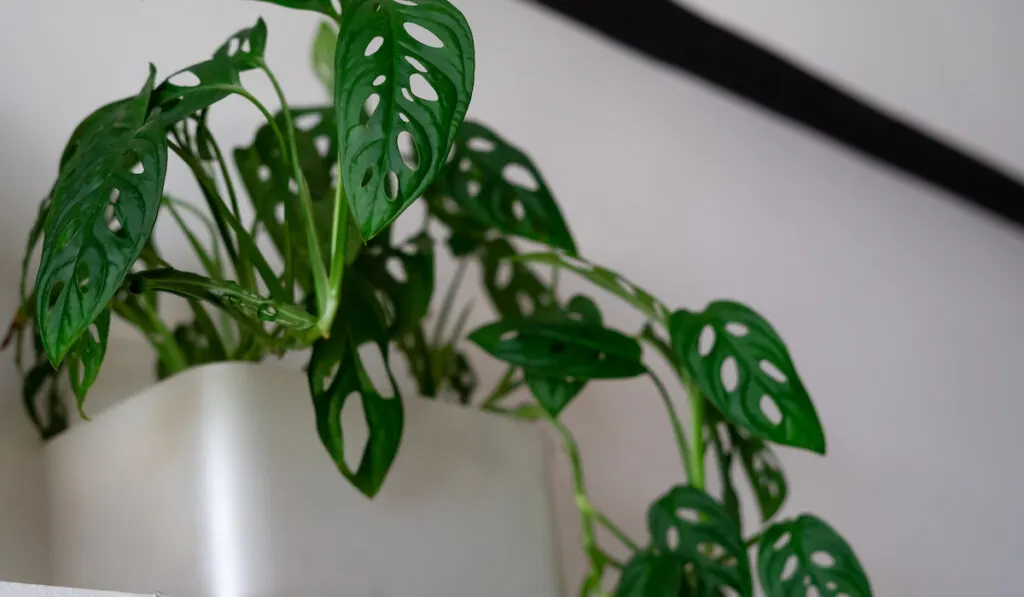
- Height: 3-5 feet.
- USDA hardiness zone: 10-12.
- Bloom season: Does not bloom indoors.
Another very common plant to grow indoors is the Swiss cheese plant. This beautiful plant may be very common in people’s homes, but its beauty is still one of a kind.
The Swiss cheese plant gets its name from the holes in its leaves. The holes make the leaves resemble cheese, as most cheeses have holes in them.
Swiss cheese plants are very easy to grow. Head to a gardening store and buy an all-purpose fertilizer or nutrient mix for your plants.
These plants are popular, so the store will likely have ideal fertilizers. You can even find Monstera-specific substrates for your plants.
While the plants grow, support their growth with a rope or stake. You can even use a beautiful plant trellis if you want. Just help the plants by providing them with a structure they can climb.
3. Moon Cactus (Gymnocalycium mihanovichii)

- Height: 12 inches.
- USDA hardiness zone: 11-12.
- Bloom season: Spring.
What plant can be more unique than the moon cactus, which is a two-in-one plant? Looking at the beautiful top of a moon cactus, you may think it is a flower.
While it can flower, the top of the moon cactus plant itself is an entirely different plant. The top, which is the actual Gymnocalycium mihanovichii is attached to a green base.
The green base will help send nutrients and energy to the top, as the top can hardly photosynthesize.
You can buy moon cacti from succulent or cactus shops near you. However, you can graft them yourself if you like. Just ensure that you do it well.
Make or buy a cactus or succulent mix to grow these beautiful and unique plants. Also, water them once a week or every two weeks.
Do not overwater them as they tend to become weak with too much moisture.
4. Prayer Plant (Maranta leuconeura)
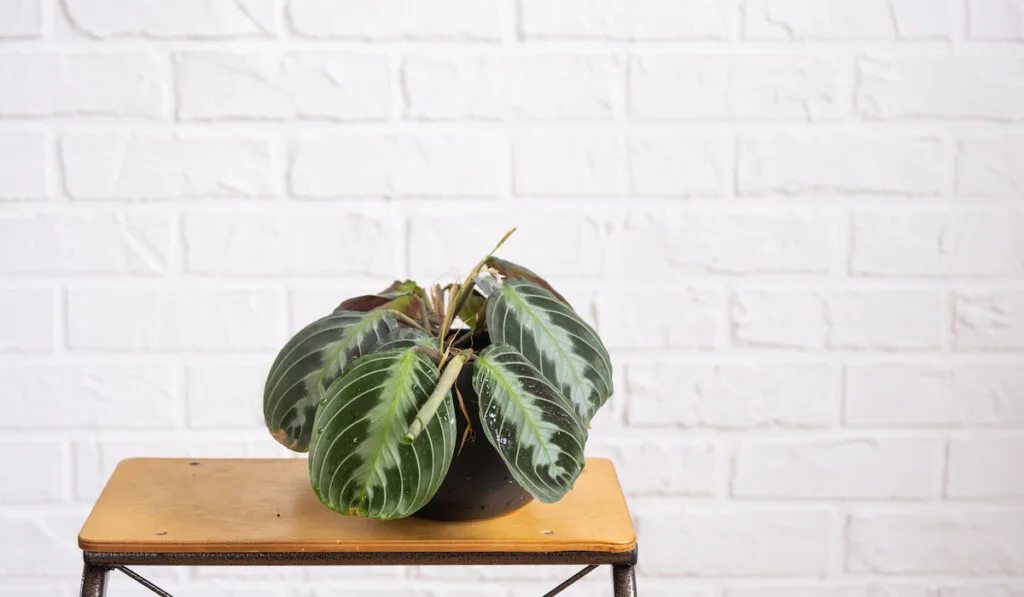
- Height: 6-12 inches.
- USDA hardiness zone: 11-12.
- Bloom season: Spring and summer.
You love houseplants, no doubt. How’d you like a plant that can pray with you at night? This is the plant for you.
Prayer plants get their name from their behavior of raising their leaves at night. They raise the leaves just the way children raise their hands while praying before bed.
Prayer plants are also lovely. Their multicolored leaves come in different patterns and will beautify your room.
You can use an all-purpose potting mix to grow your plants. Also, use a general indoor plant fertilizer. Just remember to dilute the nutrients so they do not burn your plants.
Also, locate prayer plants some feet away from the window when summer comes so the leaves can stay fresh and free from burn spots.
5. Living Stone Plant (Lithops spp.)

- Height: 0.5-2 inches.
- USDA hardiness zone: 11-12.
- Bloom season: Fall.
Living stones, as their name suggests, are plants (living organisms) that look like stones. When walking in the wild in South Africa and other Southern African countries, you might see the stones, not knowing that they are plants.
Living stones are succulents, so if you want to grow them, treat them as succulents. This means that their substrate should be very loose and on the dry side.
Prioritize sunlight over water for your plants. Also, ensure you occasionally feed your plants with a succulent mix so they do not stop growing.
If you continue caring for your plants, you will get a pot covered in living stones in no time.
6. String-of-Pearls (Curio rowleyanus)
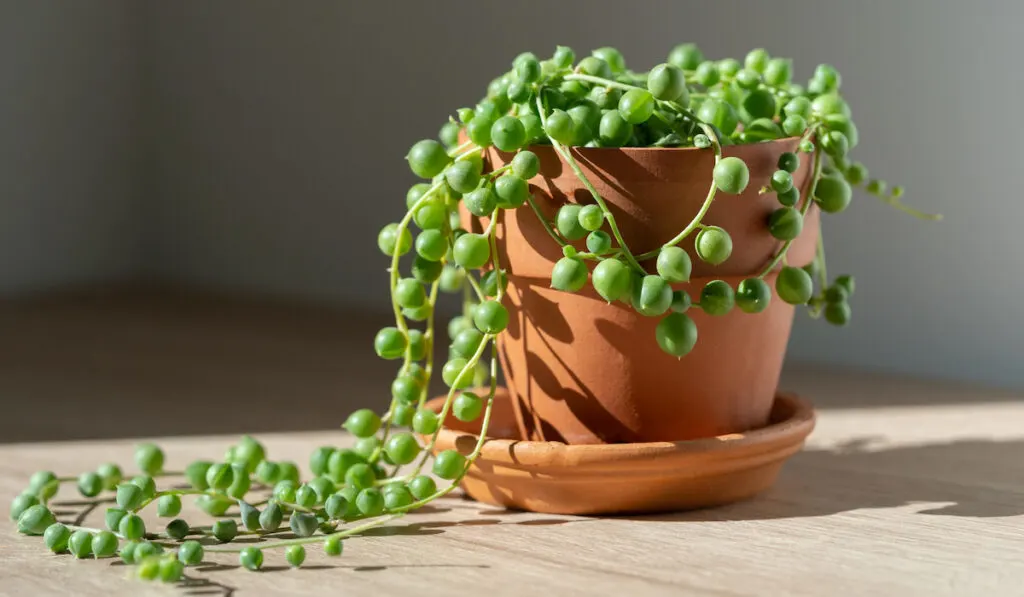
- Height: 1-12 inches.
- USDA hardiness zone: 9-12.
- Bloom season: Summer.
Talking about succulents, here’s one that you’d never guess is one until you walk a few steps closer to it. This unique houseplant with bead-like leaves is worth growing if you want your visitors to always stare.
The string of pearls plant is a succulent plant with trailing leaves that will beautify your hanging baskets just like other regular plants.
To grow this beauty, you need a hanging basket and airy substrate. You also need a place with access to six hours (or more) of sunlight so that the plants can grow healthy green leaves.
Occasionally, prune off the discolored leaves so that your plants can stay green, beautiful, and healthy.
7. Little Owl Plant (Huernia zebrina)
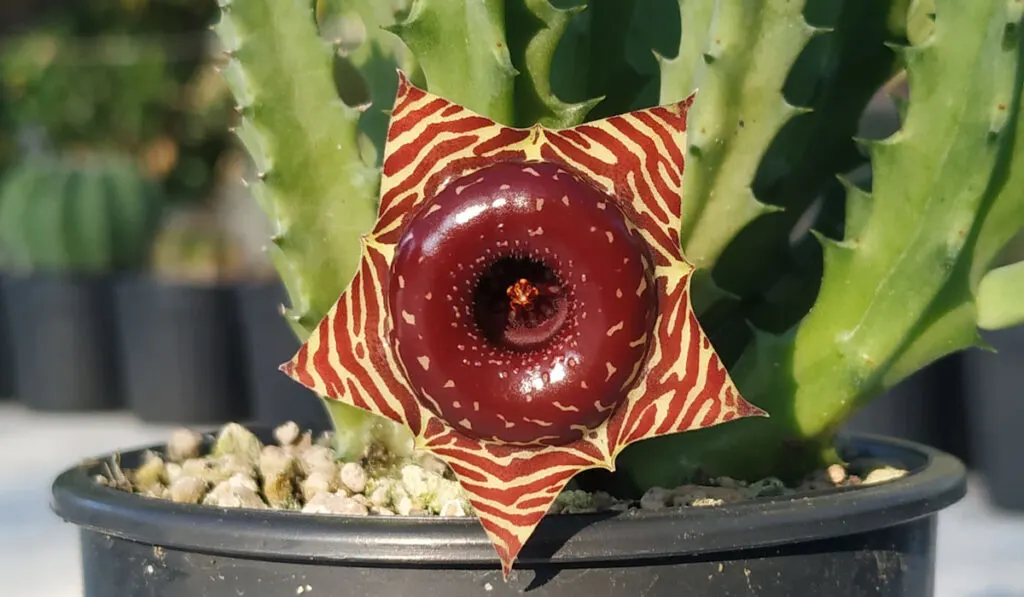
- Height: 6-8 inches.
- USDA hardiness zone: 9-11.
- Bloom season: Late spring.
This is truly a unique indoor plant, and you can easily grow it.
The little owl plant is categorized as a cactus or succulent. It also goes by the name “owl eye plant” because it has flowers that resemble the eyes of owls.
Little owls also have stems with four sides. Each side of an owl plant stem has little teeth that will not harm you.
Your little owl plants are unique and will surely draw attention. However, they are effortless to care for. So long as you can care for succulents, you can care for little owl plants.
Remember to keep your plants near the window or in a room with six or more hours of sunlight.
Also, keep the humidity slightly below average, as succulents do not like growing in richly humid rooms.
8. Venus Fly Trap (Dionaea muscipula)
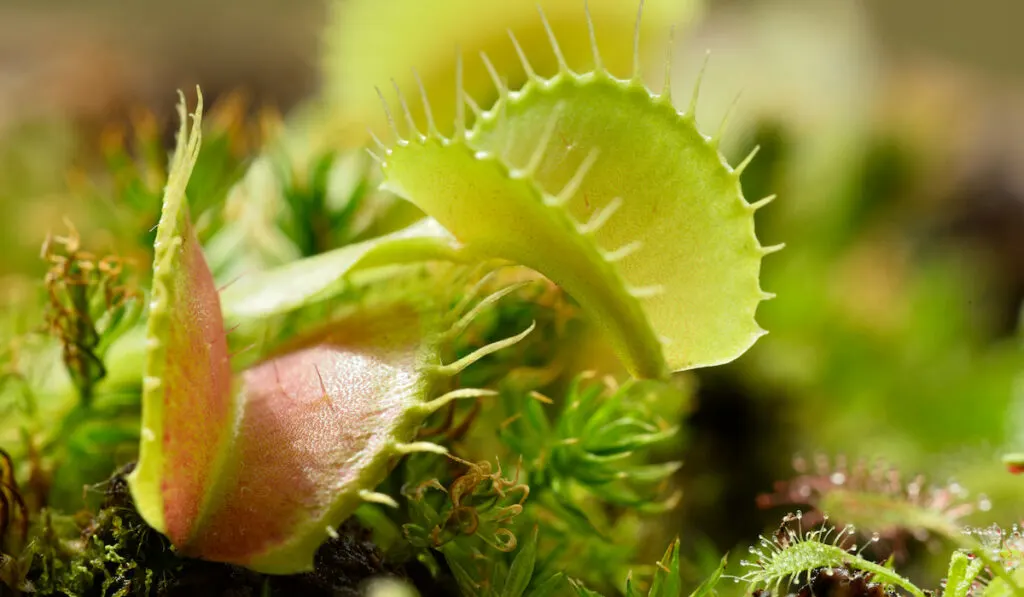
- Height: 8-12 inches.
- USDA hardiness zone: 7-10.
- Bloom season: Spring.
Of course, there’s no way to skip the fly trap plant if unique plants are what we’re looking for.
These plants are not just weird looking; their method of care is also unique when compared to other plants.
The substrate of your plants has to be nutritious.
The Venus fly trap plants are carnivores and collect nutrients from organisms such as insects. As such, you should occasionally feed your plants with bugs so that they can get their essential nutrients.
When growing these plants, ensure that the temperature ranges from 70°F to 95°F while the humidity is around 50%.
Also, grow the plants in a shaded yet bright location.
9. Shameplant (Mimosa pudica)
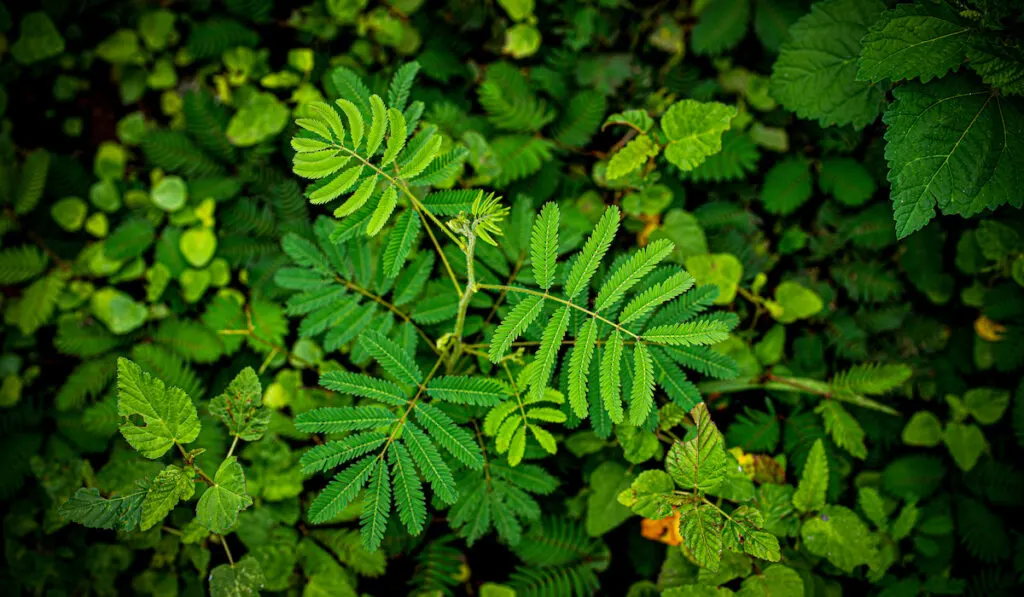
- Height: 12-18 inches.
- USDA hardiness zone: 9-11.
- Bloom season: Year-round.
How else can a plant be unique if it is not afraid of you? When you touch the plant, better known as touch-me-not or sensitive plant, it will close its leaves.
Shameplants are not just beautiful and suitable to grow indoors, they also help enrich their substrate. These plants are legumes just like beans, so you do not need to regularly fertilize them.
Please prevent your pets from eating the leaves, as shameplants have thorns all over their stems and branches.
To grow these plants, you need loose yet moist soil. Also, grow them in a shaded environment where they can get four or more hours of sunlight daily.
10. Air Plant (Tillandsia spp.)
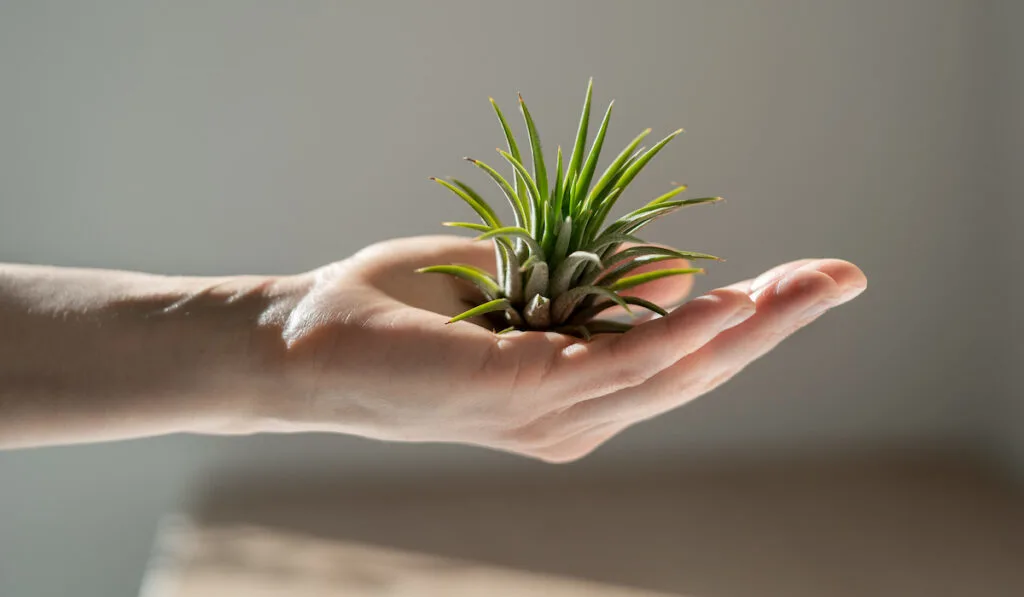
- Height: 2-12 inches.
- USDA hardiness zone: 10-12.
- Bloom season: Summer and spring.
If you are looking for a plant that will be the center of attention in your room, here you go.
Air plants, or epiphytes, are truly the definition of weird looking, as you can grow them without the use of soil. This means that they attach themselves to trees and other structures.
They sometimes grow attached to rocks.
If you’d love to grow your plants without a soil-based substrate, you can use tree bark or any beautiful object you can think of.
Once a week, soak and submerge your plants in water so that they can get hydrated. You can also water them by misting their leaves.
As for fertilization, use foliar fertilizer for their leaves. Mix the nutrients with water and mist the leaves of your plants.
11. Wine Cup (Crassula umbella)
- Height: More than 6 inches.
- USDA hardiness zone: 9 and above.
- Bloom season: Spring and summer.
There’s no way you wouldn’t want to grow this beauty in your home.
The wine cup plant has round leaves with depressed centers, making them look like wine cups. Something extra special is the flower stalk, as each stalk grows directly from the middle of the leaves.
Awesome, right?
When watering your plants, keep watering them until the soil is evenly moist before you stop. You can stop when you see water dripping from below the pot.
Enrich the soil with a nitrogen-rich fertilizer so that the leaves of your plants can stay green and healthy.
Conclusion
These unique houseplants are truly beautiful, right? Your houseplants will surely draw attention, and your visitors will not get bored around the plants.
Remember to only grow plants suitable for your location. Also, care for your plants by sticking to their care requirements.
